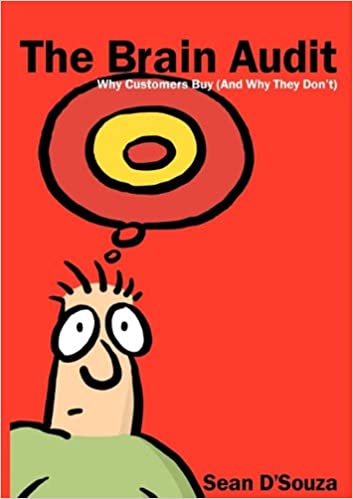This post is part of the 📖 The Brain Audit series.
Today I am reading a new chapter The Trigger from the book The Brain Audit: Why Customers Buy (and Why They Don’t) written by Author, Sean D’Souza.
Do you often wonder what your customer is thinking? Don’t leave the thought process to chance and let that customer walk away. Your customers don’t want to walk away. They want to buy from you.
The Brain Audit shows you how the customer takes decisions. And what you need to put in place, so that the customer feels happy to buy products or services from you.
Yesterday, I started reading Bag No. 3: The Target Profile chapter.
From the introduction chapter, we read and understand that we need to know the 7 elements of why our customers buy from us or why they don’t. Here are the 7 things for you to recap.
- Bag No. 1: The Problem
- Bag No. 2: The Solution
Bag No. 3: The Target Profile (The Trigger)(we are reading ‘The Trigger’ part today)- Bag No. 4: The Objections
- Bag No. 5: The Testimonials
- Bag No. 6: The Risk Reversal
- Bag No. 7: The Uniqueness
The Trigger
Pop Goes The Trigger!
When the brain gets a ton of stuff, it only pays attention to what’s really important. Or to something that causes intense curiosity.
Some scientist or researcher somewhere worked out that we see about three thousand new messages per day.
What would it take for the client to ignore the tonne of messages and focus on your message?
It’s called a trigger. And a trigger is simply the ability of a message to stand out, and get your attention.
A trigger instantly gets the attention of the brain. And when faced with the trigger, the brain — your brain or the client’s brain— has very little option but to respond in an excruciatingly predictable manner.

Do you know you can listen to this book on Amazon Audible for FREE?
If you are not into reading like me, then you can listen to this book for FREE on Amazon Audible
Don't Read. Just 🎧Let’s look at three examples to see how a trigger is set off.
Example: Yoga centre (training)
Target: New mums
Problem: Loss of pre-baby figure
Solution: Get back pre-baby figure
Trigger: We help new mums quickly get back their pre-baby figure.
Example: Recruitment agency (service)
Target: Small businesses that want part-time staff
Problem: Big fees
Solution: Get part-time staff without paying big fees.
Trigger: We help small businesses get part-time staff without paying big fees.
Example: Face cream (product)
Target: 50 year-olds/ 50+/soon to be 50/ or even 40+
Problem: Looking like a 50-year-old
Solution: Looking like a 30-year-old
Trigger: How to look 30 when you’re 50
Water down the trigger example: Bad example (don’t use it)
Target: Women who want to improve their fitness
Problem: Women who are feeling unfit
Solution: A system to get women, fitter, again
Trigger: We help women improve their fitness. (Meh… bad trigger, curiosity factor is missing :-( )
If you fail to set off the trigger in the customer’s mind, they’ll make polite conversation with you, and then quickly slink away.
Let’s take an example of a likely conversation:
Yoga centre owner: We help new mums quickly get back their pre-baby figure.
Mum (customer): How do you do that?
Yoga centre owner: We find that mums put on a lot of weight during their pregnancies (problem), and want to get those extra kilos off (solution). But it’s not just getting the kilos off that’s the issue. Getting back to strenuous exercise can be difficult, and lead to injury (problem). We help mums get back to their pre-baby figure with injury-free yoga especially designed for new mums. And this helps new mums get back their pre-baby figure (solution).
Key Takeaways
- Bring in too many problems, and the customer feels overwhelmed and feels unable to respond. Bring in too many solutions, and the customer feels too relaxed. He/She feels no urgency to buy your product/service right away. So it’s a factor of ‘too hot’ or ‘too cold’, but then what’s ‘just right?’
Summary
- The role of the trigger is to get your brain to respond with curiosity. And when the brain is curious, it asks predictable questions such as ‘How do you do that?’ or ‘What do you mean by that?’
Buy or not buy?
This book is excellent. Do not hesitate to pick this. Pick the physical book, so you take notes and highlight the bits you want to reference later. This book is such a kind of book where you need to pass it to the next generation.
Listen, I don’t care whether you buy the book using one of the links on the page or not but just buy. You will be glad for my recommendation.
Author(s): Sean D'Souza
Part 7 of 15 in the 📖 The Brain Audit book series.
Series Start | The Brain Audit: Why Customers Buy (and Why They Don't) - Day 6 | The Brain Audit: Why Customers Buy (and Why They Don't) - Day 8
